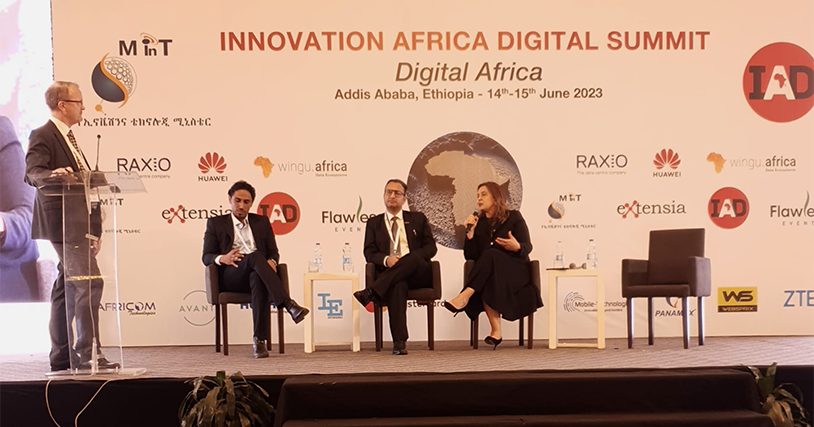
According to the International Telecommunications Union (ITU), internet penetration in Africa was 40.2% in 2021―meaning just 4 out of 10 people had access to the internet, with significant variation between countries and communities. While one-half of urban dwellers are online, only 15% of rural populations are. For that reason, government decision makers and industry leaders at events like Extensia’s Innovation Africa Digital (IAD) Summit and the ANGOTIC 2023 Conference in Angola, were keenly focused on exploring how to reduce these disparities and drive digital transformation across the continent. Here are four takeaways from these events:
- Expanding broadband networks isn’t a cure all. In recent years, Angola (like other African nations) has made significant strides in improving its telecommunications infrastructure, with the government and private sector investing heavily in the expansion of broadband networks. However, despite these efforts, the country still faces a considerable digital divide, with rural and remote areas lagging in terms of connectivity. It’s often just too challenging and costly to deploy traditional broadband technologies, like cable, DSL and fiber, to these areas.
- Increasing digital connectivity in rural communities requires greater access to technologies and solutions, like satellite internet service and Very Small Aperture Terminals (VSATs). Many such initiatives are already underway. For example, when it comes to bringing satellite internet service to more consumers and businesses across the continent, Hughes is a partner of choice for Ethio Telecom in Ethiopia, providing ground system and VSAT equipment. Angola is also now promoting the adoption of VSAT technology to increase connectivity and boost the country’s socio-economic development.
- Reducing the digital divide requires addressing unique environments. All types of businesses and sectors are impacted by the digital divide. Yet some sectors face particularly challenging situations. Enterprises within the oil and gas industry need offshore connectivity to support exploration and drilling operations; mining, agriculture and healthcare have their own distinct settings to contend with. Here again, Angola views VSATs and satellite broadband service as an ideal, cost-effective option for delivering reliable connectivity to uniquely remote areas.
- Expanding access everywhere will be easier with Low Earth Orbit (LEO) satellites. Several geosynchronous (GEO) satellites, including the recently launched Angosat-2 satellite, provide connectivity across much of the continent today. These will soon be complemented by OneWeb’s LEO constellation, which will have a prominent hub located in Angola. LEO satellites deliver high throughput at low latency, while GEOs have the capacity to deliver lower cost, high throughput services. Emerging ground system technologies and Hughes Electronically Steerable Antenna (ESA), with its low profile and sleek design, mean high throughput, low latency connectivity is now feasible throughout Africa––and in fact, around the world from pole to pole. The ESA can support fixed, land mobile, maritime, and aviation applications, offering connectivity options that were simply unavailable to most African countries until now.
Reducing the digital divide will likely require more opportunities like this for decision-makers to come together to continue learning, sharing and collaborating on how best to achieve their goals. The good news is, attending trade events is not the only way to make progress on high priority initiatives. Industry leaders like Hughes can help governments explore how to increase their access to technologies and deliver services to connect anyone and everything in real-time––even in uniquely remote settings on a vast continent.